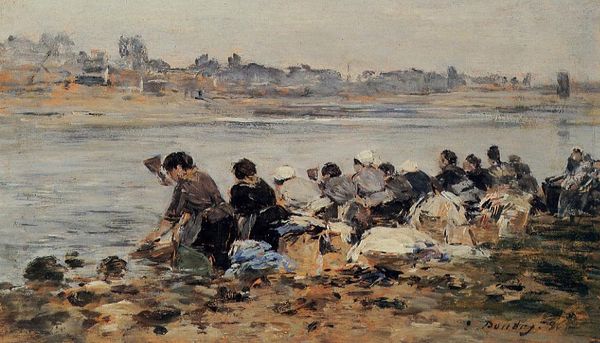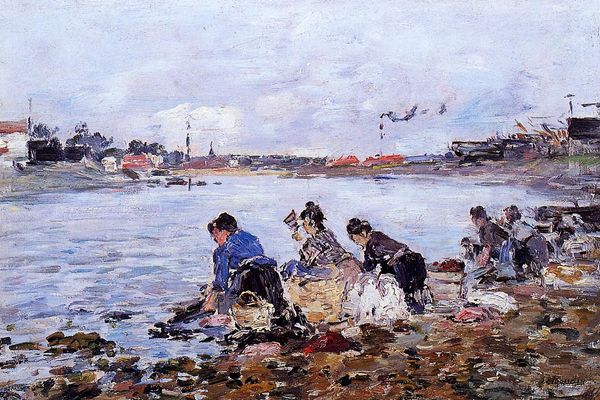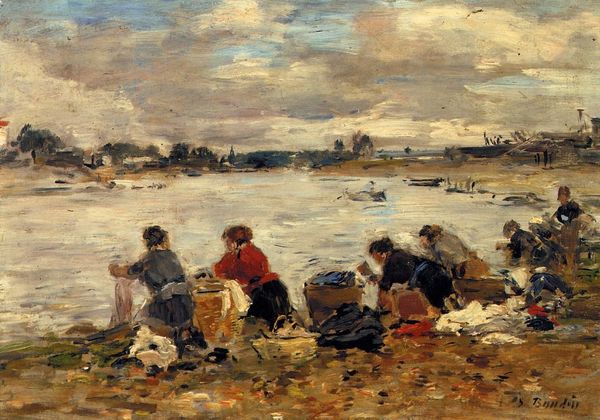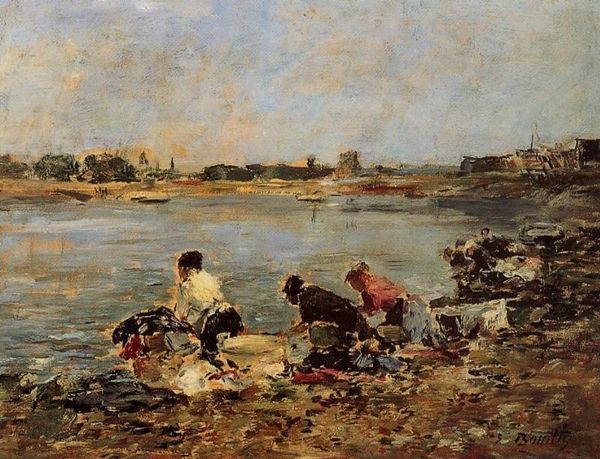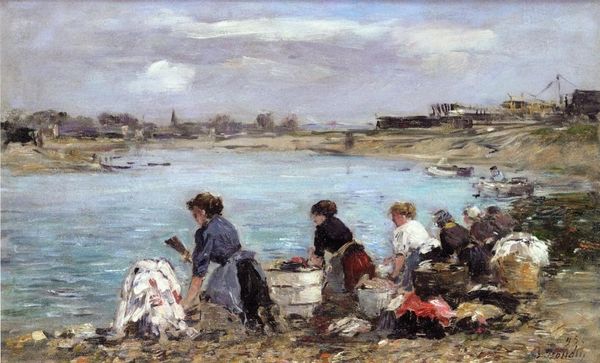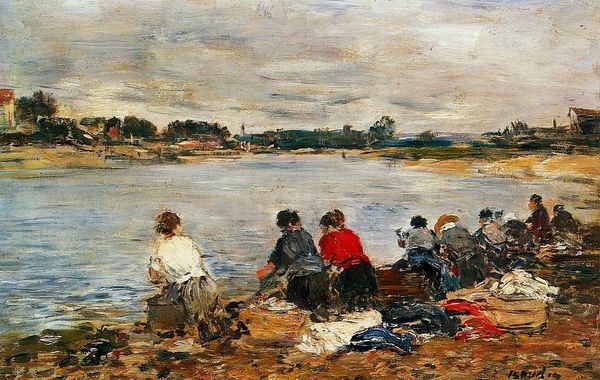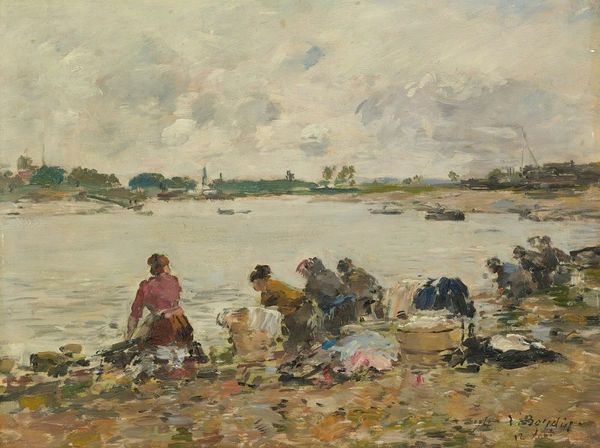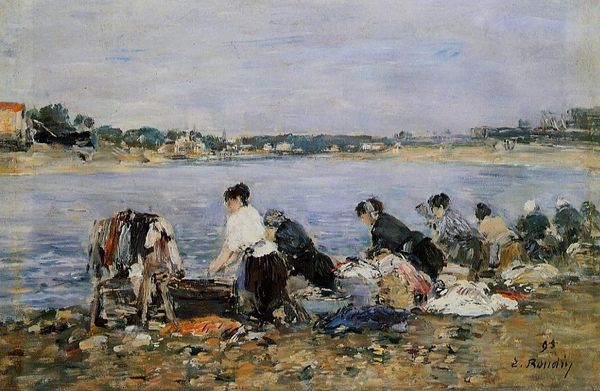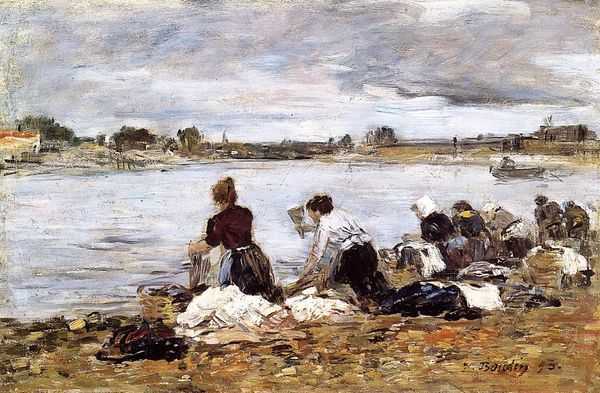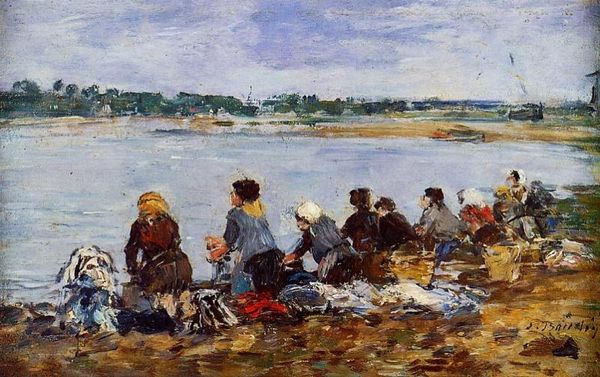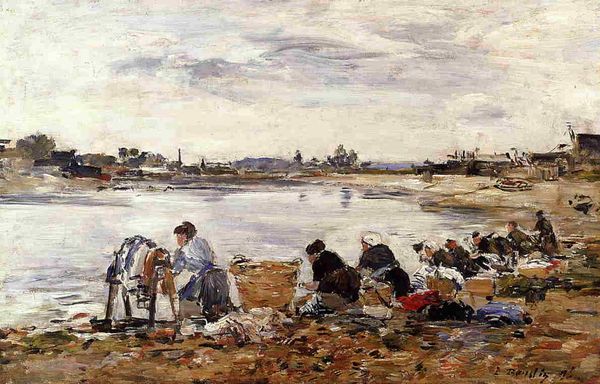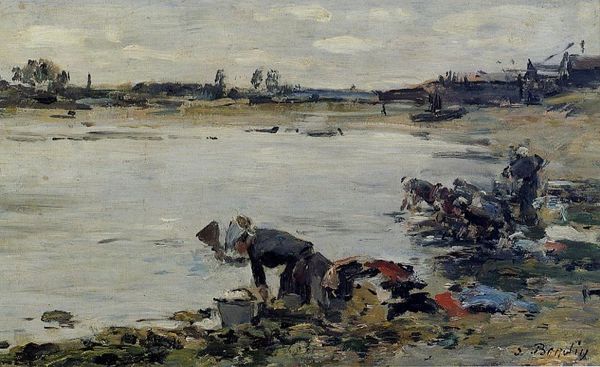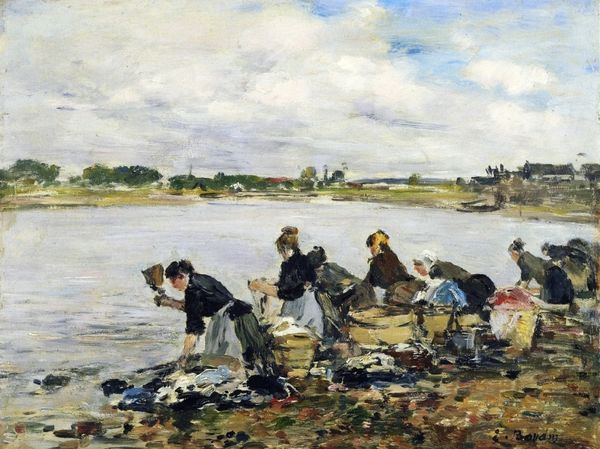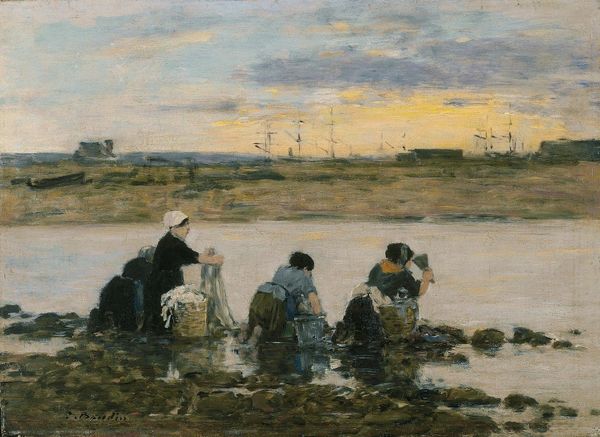
plein-air, oil-paint
#
impressionism
#
plein-air
#
oil-paint
#
landscape
#
impressionist landscape
#
oil painting
#
seascape
#
genre-painting
#
watercolor
Copyright: Public domain
Curator: Eugène Boudin’s oil painting presents laundresses at work along the Banks of the Touques river. What is your immediate impression of the scene depicted here? Editor: I notice the muted palette, mostly blues and browns, creates a sense of drudgery. The women’s labor seems quite ordinary, yet it's also tinged with resilience, wouldn't you agree? You see their backs turned, anonymous. It emphasizes the collective act of working, and its everyday setting. Curator: Indeed. Laundry, of course, carries powerful symbolic associations of purification and cleansing, linked to rituals across various cultures. Boudin highlights their crucial, if often invisible, role in society. And consider, too, the symbolism of the water itself - always in flux, like the circumstances of these working women. Editor: What's also striking to me is how Boudin focuses on the materiality of the work – the rough textures of the clothing, the dampness of the riverbank. It pulls our attention toward the physical exertion involved. How do the artistic choices, like his quick brushstrokes, relate to this material focus? Curator: The quick, almost blurred strokes speak to Impressionism's embrace of fleeting moments. They mimic the constant motion of the water and perhaps, even, suggest the rapid pace needed to make a living doing laundry. But it's also his focus on capturing atmosphere, the unique quality of light in the open air. Editor: Right, the "Plein-air" method speaks volumes. Yet, by rendering it in oil paints, Boudin elevates the humble labor into art, lending it permanence and, dare I say, dignity. Oil paint gives substance, heft, to a world seen in an instance. Curator: A beautiful point. Boudin invites us to see not only the symbolic importance of their work but the physical demands and lived reality, creating empathy by bringing dignity to their labor through artistry. Editor: Precisely. I’ll walk away reflecting on labor, materials, and that powerful composition—how work shapes people and is elevated by the artistic process. Curator: I, too, am struck anew by how symbols, so interwoven in our lives, are often brought most clearly to light in the hands of artists like Boudin.
Comments
No comments
Be the first to comment and join the conversation on the ultimate creative platform.
